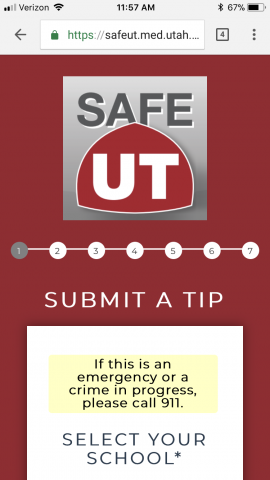


Talking about suicide can make us feel uncomfortable. Yet, understanding it and learning more about the warning signs can be crucial.
Spencer J. Cox, husband, father, and Utah Lt. Governor, recently spoke at a community suicide prevention meeting in Tremonton. He says, “…We simply need to talk about it more—and that contrary to what you may have heard, there is NO evidence that talking about suicide makes it more likely to happen.”
Cox goes on to tell us that, “Unfortunately, our State received some bad news. The rate of teen suicide in Utah is increasing much faster than the national average. Suicide is now the leading cause of death among young people here. “
We also learned that 17% of our youth report seriously consider a suicide attempt.
Last month, Governor Herbert asked Representative Steve Eliason and Lt. Governor Cox to chair an emergency Youth Suicide Prevention Task Force.
Cox said he has learned something very important through this process. He says, “I learned that no one wants to end their life. Rather, they want to end their pain. I learned that everyone needs to lock up their guns and download the SafeUT app. I learned that our LGBT youth are at much higher risk for suicide. I learned that connection is the best prevention.”
Talking about suicide is what we hear over and over. Talk about it often. We need to talk about mental illness and suicide just as we would about a broken leg or having a bad cold.
The Church of Jesus Christ of Latter Day Saints puts out a monthly magazine called, Ensign. Inside the October 2016 issue, there is an article titled, “Understanding Suicide: Warning Signs and Prevention.”
We read, “Suicide is one of the most difficult trials in mortality, both for those suffering with suicidal thoughts and for surviving family members.”
Elder Russell M. Ballard of the Church’s Quorum of the Twelve Apostles stated, “In my judgment, there is no more difficult time for a family than when a loved one takes his or her own life. Suicide is a devastating family experience.”
Sadly, the statistics say that over 800,000 people end their lives each year, worldwide. This means that someone is ending their life every 40 seconds.
Suicide is the second leading cause of death among those ages 15-29 years.
Let’s talk about the Warning Signs:
Again, from inside the October 2016 Ensign magazine we learn of three serious warning signs:
*Making threats to hurt or kill themselves
*Seeking ways or means to kill themselves
*Talking or writing about death, dying, or suicide
These next signs are not quite as urgent but should, nevertheless, be ignored:
*Expressing hopelessness and loss of purpose in living
*Showing rage or anger or seeking revenge
*Behaving recklessly
*Feeling trapped
*Increasing their alcohol or drug use
*Withdrawing from friends, family, or society
*Feeling anxiety or agitation or having dramatic mood changes
*Struggling to sleep or sleeping all the time
*Feeling that they are a burden to others
Helpful things you can do as a family member or a friend:
Reach out and listen with love.
Elder Ballard also says, “There is nothing more powerful than the arm of love that can be put around those who are struggling.”
Elder Dale G. Renlund, also a member of the Quorum of the Twelve Apostles for the Church of Jesus Christ of Latter Day Saints, said, “We must see them…through Heavenly Father’s eyes. Only then can we sense the Savior’s caring concern for them…this expanded perspective will open our heats to the disappointments, fears and heartaches of others.”
So, please, let’s do this together. Let’s help each other.
Lt. Governor Cox admonishes us by saying, “Lock up our guns. Let’s all download the SafeUT app. Let’s put away our phones and start connecting more. And—seriously—let’s start talking about suicide.”
For more resources visit www.PreventingSuicide.lds.org
Also, take a look at the SafeUT app for your phone.